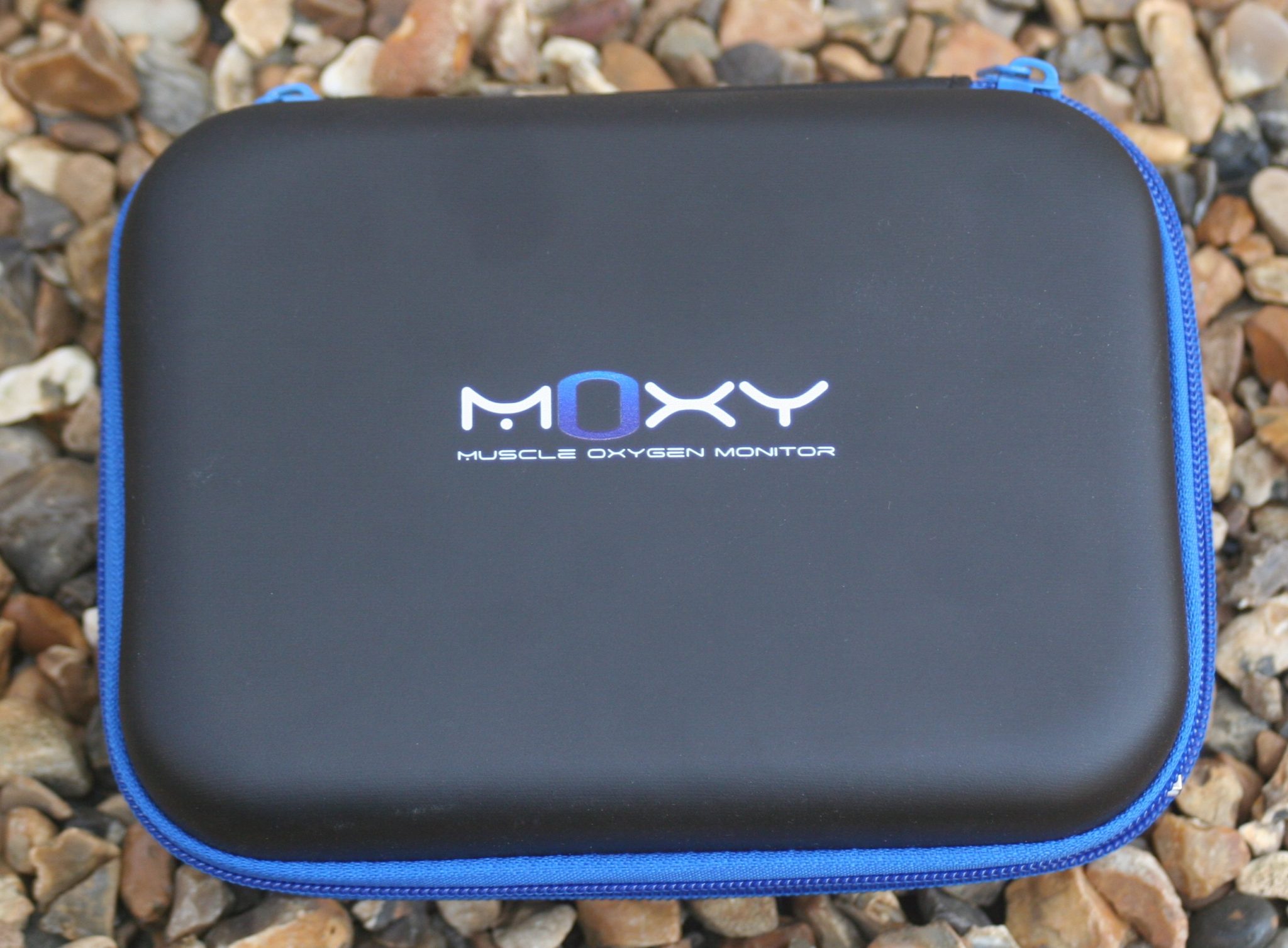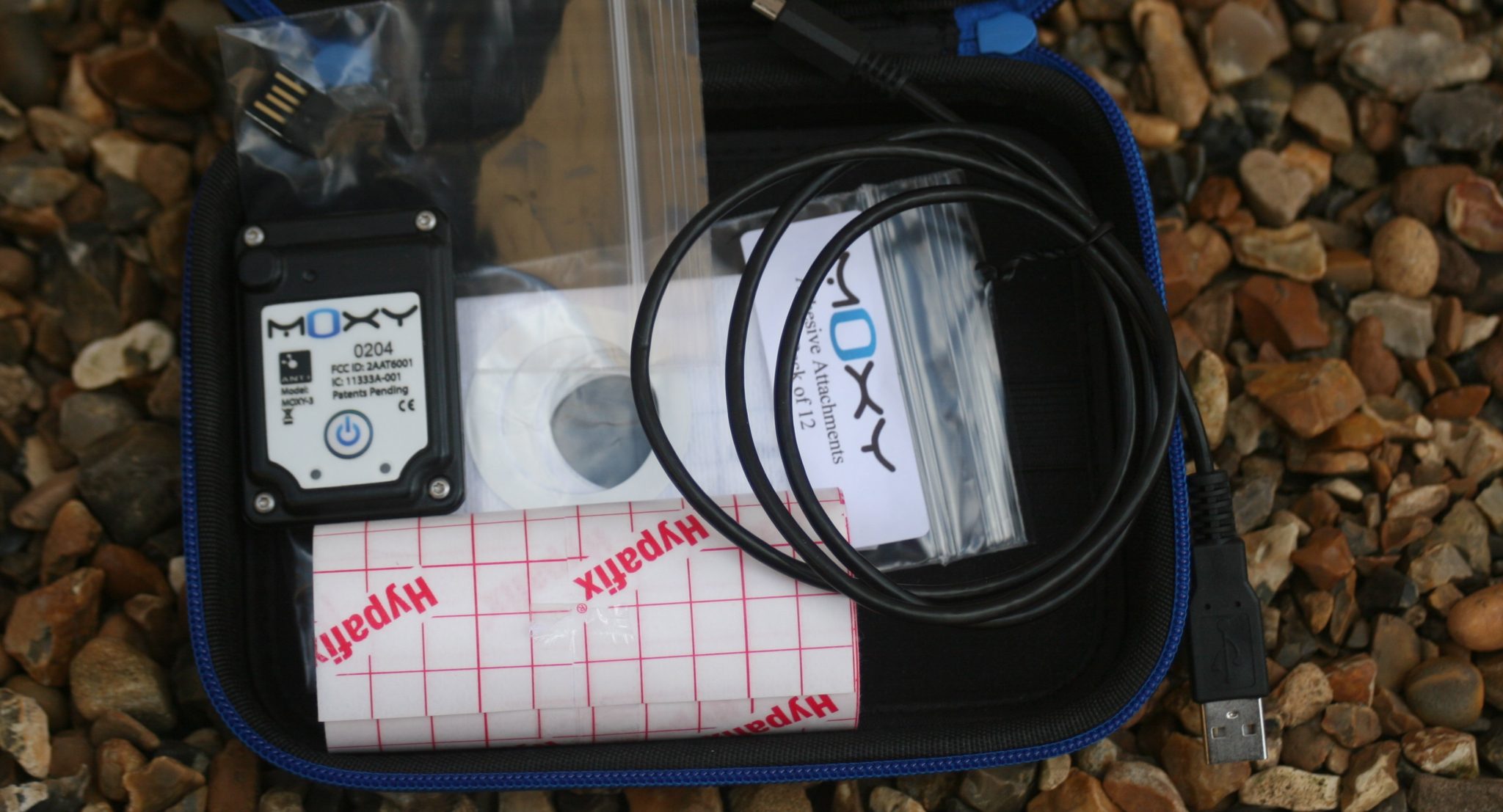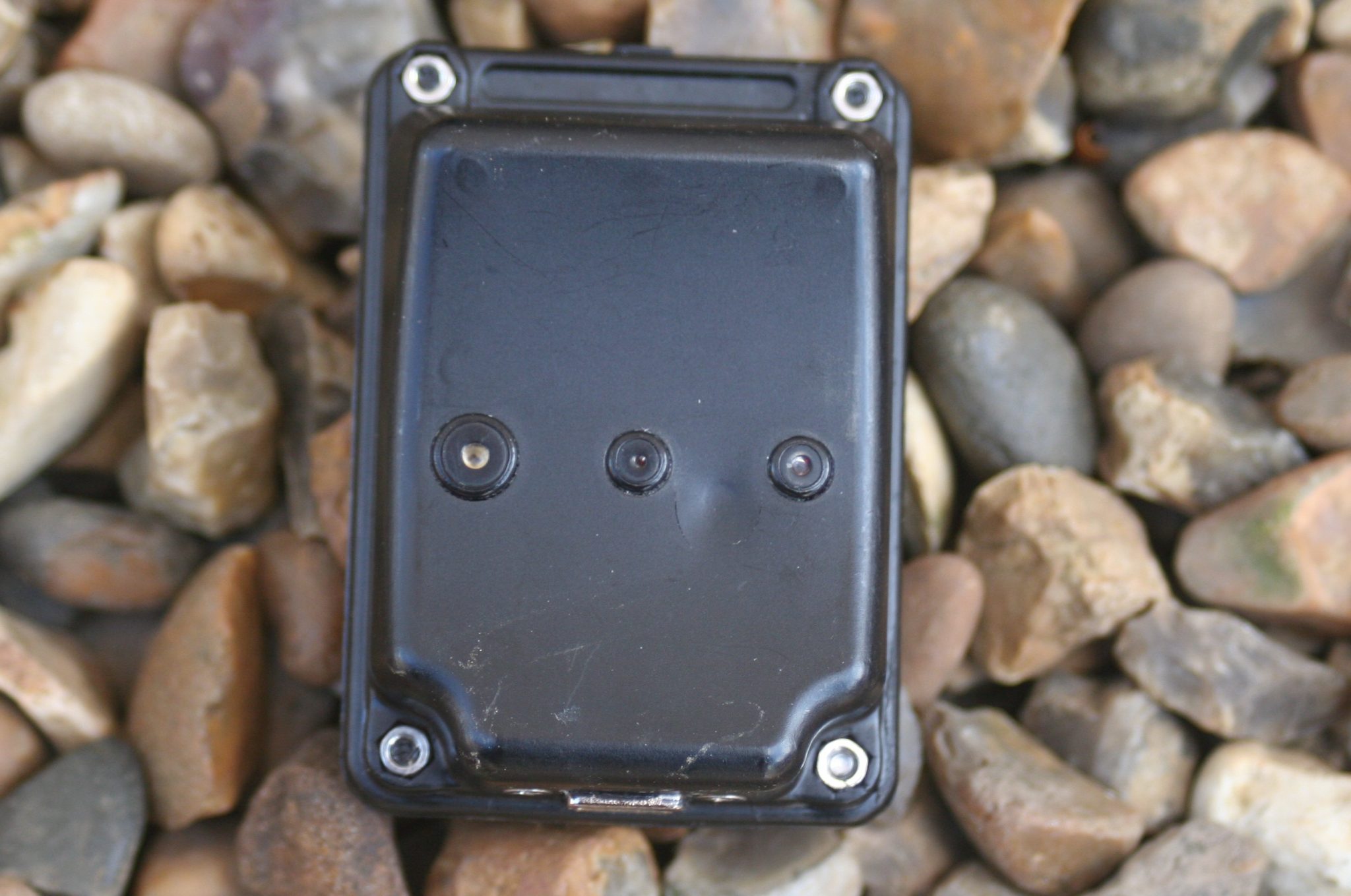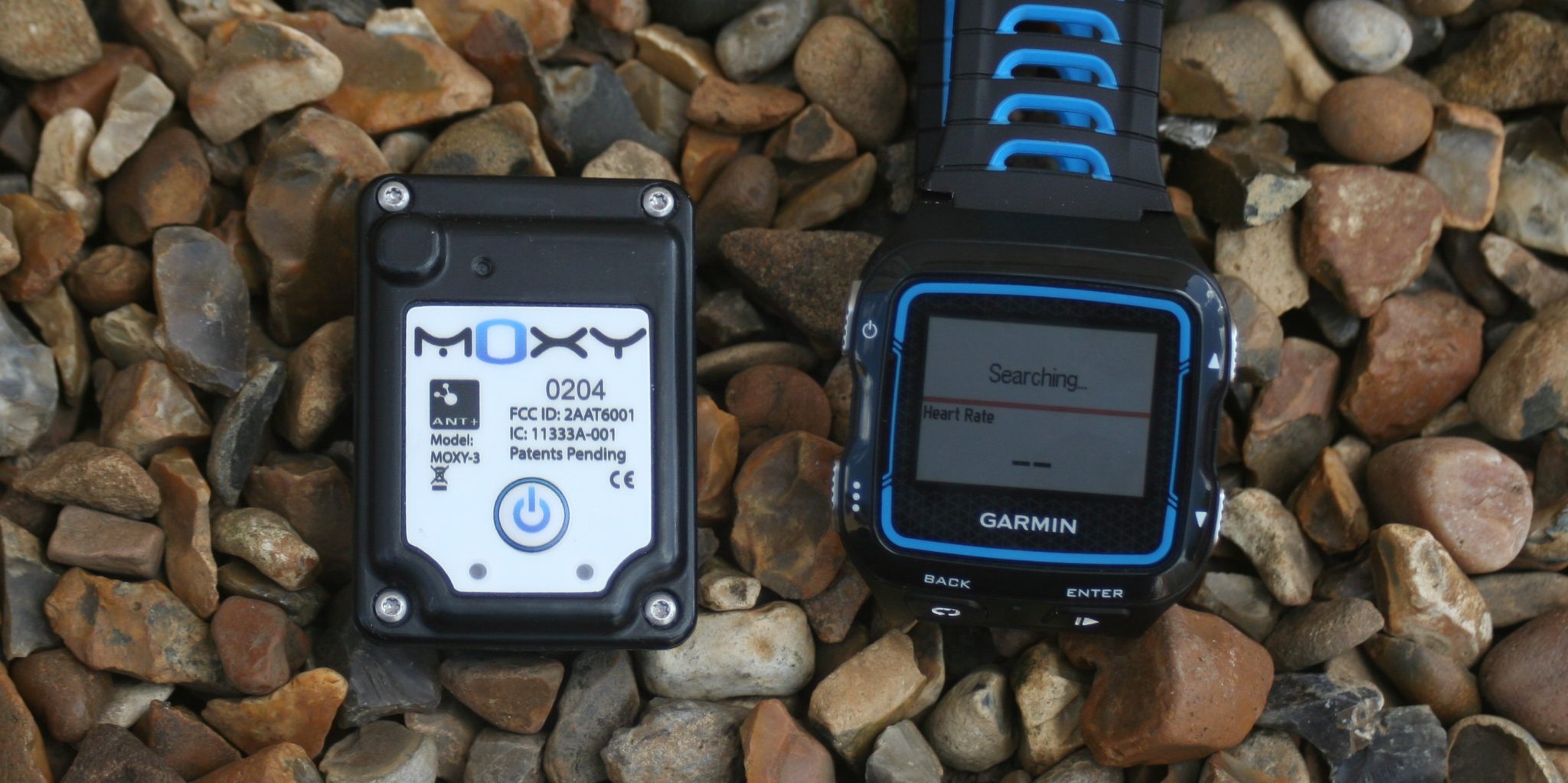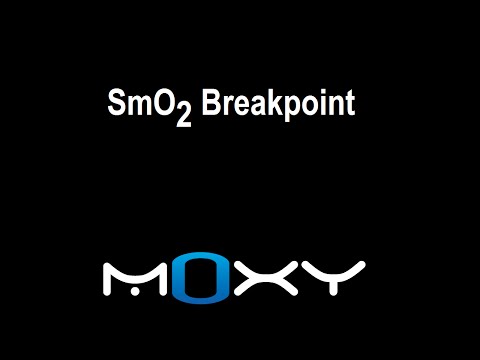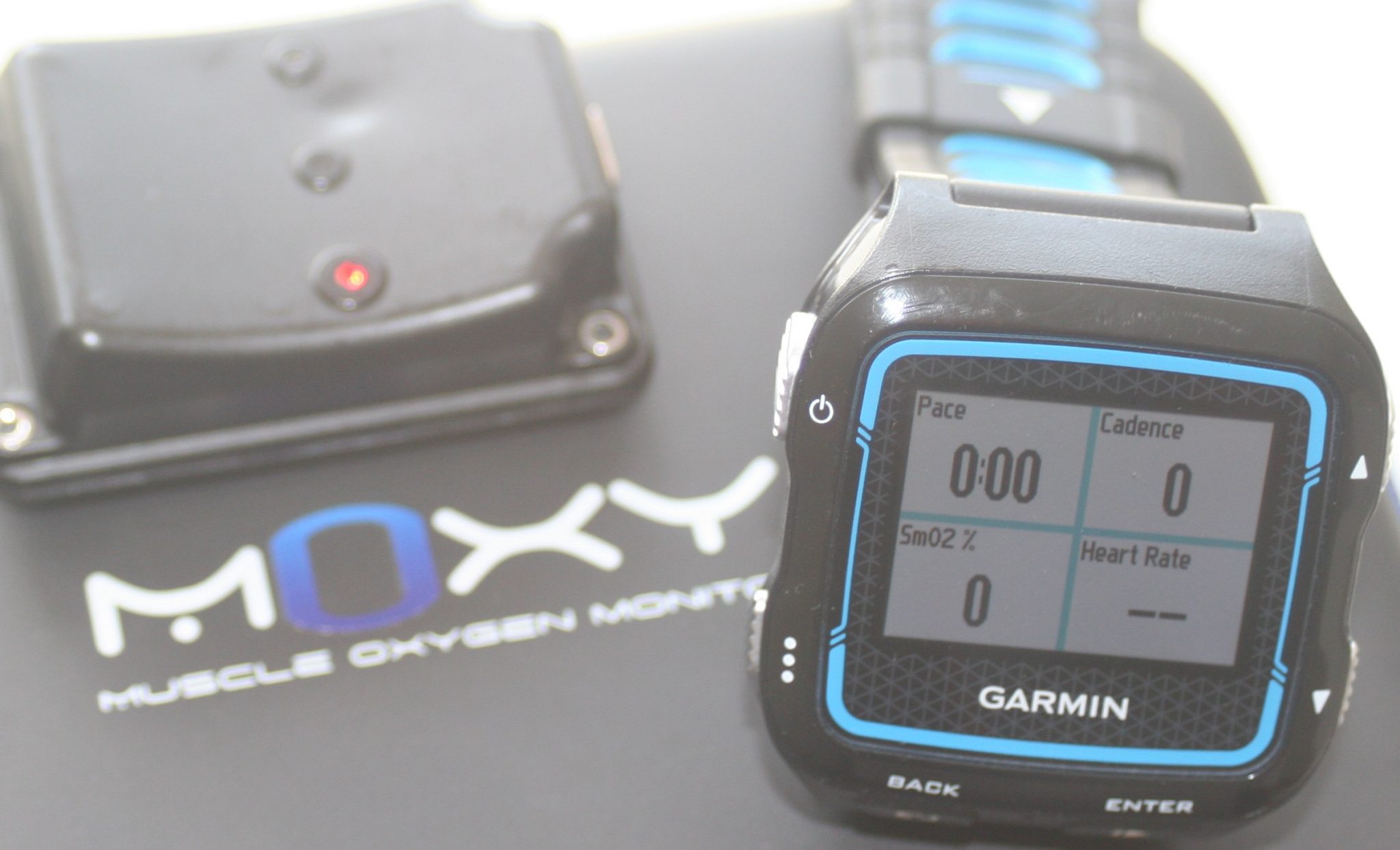
MOXY uses the nature of the reflected light to determine the amount of oxygenated blood. Oxygen in the muscle of an endurance athlete is obviously important.
Although as we shall start to see, muscle oxygenation is more complex than a layman’s understanding of HR.
Unboxing + Contents
You get a nice box like this
Which opens up to give you all the bits below. Essentially it’s the device; a USB dongle; a micro USB cable; and a pack of circular adhesive attachments. I also got a larger strip of Hypafix tape which I don’t think comes with the retail unit.
The USB dongle is required only if you want to record live-streamed MO2 data on a PC using software like Golden Cheetah and Peripedal (trial licence included).
If you want to download the data from the MOXY unit at the end of the exercise then you will use the cable and the free MOxyPC software. MOxyPC is fairly rudimentary software which configures and updates the device. You may well end up using that, like I did.
The MOXY Device
Here’s an end view of the charging port
On the back we have the lights and sensors ALL OF WHICH MUST touch the skin.
And from the top there is an on/off button and two more lights. Above the ‘M’ of the word MOXY there is a small bump which is the ANT+ aerial.
The main function of note for the power button is that quickly pressing it will produce a flash from BOTH LIGHTS. This indicates that the device is on and working – the red light turn on at the rear but you obviously can’t see that. When you are about to start a test it’s not so obvious if the device is on and working as there are no lights on it – if you are receiving data on your watch then obviously it’s fine.
For a further sizing comparison have a look at it compared to the BSX Insight device. they are very similar in size and weight.
Wearing the device
The MOXY can be worn anywhere. Just fasten it in the appropriate area. You’ll use the circular tapes which are surprisingly strong. Firstly you fasten the tape to the MOXY unit after removing the circular strip and then you fasten to your body by removing the entire opposite side of the rectangular tape patch.
For cycling you will probably be most interested in a place half way between your knee and hip – 1/8th of the way around to the outside of your ‘thigh’.
This position is normally fine for your cycling shorts to easily go over it and further hold it in place whilst also keeping SOME/MOST light OUT. There is also a rubber cup (no image available) that can cover the entire device and keep all the light out. I never had a problem with light without the cup but in a lab the cup would be used for super-accuracy.
I was dubious that this tape would keep the device on but it did. Both for intense intervals and for a 4 hour ride. Every time.
In The Lab
I’m not a sports scientist.
I can certainly envisage various athletes being covered with these devices having different muscle groups on different sides of the body variously analysed. MOXY seems great for this practical purpose.
In My Pain Cave.
Affixing the MOXY unit with the tape is very quick. About the same time it takes to get a calf compression sleeve on. So time getting the kit ready is not a disadvantage. The only disadvantage is ensuring you have a ready supply of the tape.
Although the unit looks a little bulky, it’s fine under your cycling shorts. you don’t feel it at all.
I didn’t try it for running but I would imagine that some additional taping would be required on the ‘calf’ to keep the MOXY in place because of the different nature of the leg movement.
On the road
The issue when field testing is NOT how easy the device attaches but rather how easily the data can be recorded and/or viewed.
As noted earlier, the MOXY unit fully caches your SmO2/ThB data. It can all be downloaded later in FIT format directly from the device. That data can then be combined with your watch data with appropriate software like Golden Cheetah or SportTracks.
However you will most likely want to see the data LIVE on your ANT+ watch/bike ‘head unit’. That pretty much currently limits you to the WAHOO ELEMNT or Garmin Watches that support IQ Connect apps.
The WAHOO ELEMNT records the MO2 data directly onto the FIT file. The ability for an IQ Connect app to directly write to a FIT file is imminent (June 2016 maybe) and is held back by Garmin, not MOXY.
The Garmin IQ connect apps are: (here). These include new data fields to add to your device as well as an app for the run and bike 515 test protocols.
MOXY have many instructional youtube videos: such as this.
Accuracy & Accuracy vs. BSX Insight
Apologies for bringing you here if you wanted this information. I am not in a position to perform detailed scientific tests to compare the two devices or to comment on the accuracy of either device. The respective manufacturers have published numerous data in this area.
I did use the both devices simultaneously. But with the MOXY on my right ‘thigh’ and the BSX on my left ‘calf’ the readings were at very different levels and possibly both right for all I know. They both seemed to trend the same way.
Putting the MOXY to a Useful Purpose – First the 515 Protocol / Test
There are many and varied uses of this data. But first things first we need to do a test.
The test can be done on any muscle group for any endurance sport.
The test is repeated blocks of: 5 minutes effort; 1 minute stationary rest; 5 minutes effort; and 1 minute stationary rest. The two 5 minute efforts are at the same intensity ie it is really a Nx (5151) test. (N is 6 or 7 so it will take at least an hour)
The next block is at a higher level and the test is repeated to exhaustion/failure. Bearing in mind that we are looking at blood flow then, for example, in a cycle test the stationary rest period would have the MOXY unit on the right leg and that right leg would be straight in EACH rest period.
Tests begin at a low level of exertion with NO WARMUP with 3 or 4 blocks below FTP
It was really not clear to me how to determine the required effort levels from the manuals, forums and website. From what I could gather and assuming a nice round FTP of 300w it seemed reasonable to me to work in 10% (30w) increments. Thus the test might comprise
- 5-1-5-1 @ 180w
- 5-1-5-1 @ 210w
- 5-1-5-1 @ 240w
- 5-1-5-1 @ 270w
- 5-1-5-1 @ 300w
- 5-1-5-1 @ 330w (likely failure level)
- 5-1-5-1 @ 360w (almost certain failure level)
Test Results
I think this is a good test. It’s a little time consuming but it certainly gives the MO readings a chance to settle down at each power level. It’s not as hard as a shorter, traditional ramp test, in my opinion.
In the MOXY test, whilst at a new level, if you are 2 minutes in and struggling then the incentive of another 8 minutes (3+5=8) of significant discomfort is daunting inviting you to stop – so maybe the MOXY test lacks a little there in the sense that a true MAX effort may not be achieved. I don’t think that affected the validity of my results or their interpretation however.
So this data was produced by Andri at MOXY from my MOXY unit fit file (smo2/thb) and my Garmin’s FIT file (HR+power)
From this you can get your MOXY training zones. The interesting thing to me here was that muscle oxygen readings are measurements of something that is actually happening in your body that is relevant to performance. HR and power both have their issues as we know.
One problem is that a SmO2 reading of N% doesn’t necessarily correspond to a Zone per se, at any one instant in time. You’ll see below that 50% could be in any Zone.
Whereas I know that HR=145bpm is Z3 and the same applies for power zones; they have ‘threshold levels’.
For interest I interpolated (?) these Moxy Zones to HR. Giving 3 MOXY HR thresholds of 145bpm, 160bpm and 172bpm. These didn’t correspond to pure LTHR based HR thresholds at all. However those 3 values are plausibly ‘correct’ for how I often feel changes. Many-a-time I have looked down despairingly at my HR when cycling up a hill to see the magic 172bpm. 160 is about my LTHR, probably a tad lower by a beat or two.
I once wanted to do Geography at University (rather than sports science) so that admission in itself makes me unqualified to interpret further. (I didn’t do Geography) – so here’s what Andri said annotated on the chart.
I think that means that at the lower effort levels I am not getting enough oxygen in the blood ie the red line is too low for too long at the start.
At the harder levels look at the trending upwards red line. Yeah! look at me I’m making lots of oxygen. It’s a short lived excitement of course as Andri pointed out that I should be USING THAT OXYGEN. As you can see from the flat green lines at the higher levels I reached some sort of plateau. I need a bit more muscle NOT a bit more oxygen.
So it’s a few more high intensity intervals for me then?
Yes. I will probably follow that advice.
I was surprised at the advice and would have thought that the low-level aerobic stuff was my weakness as I don’t, conventionally, do enough of that work.
The advice also seems to be to warm up as I seem to take a while to get going. I’d kind of figured that out already but it is nice to have some quantification of that.
A bit more Detail on the advice
Specifically I was recommended to do short high intensity intervals. Something like 10-20s with 40-50s recovery. In the effort periods back off as soon as I hit a low SmO2 and recover to sustainable higher levels. So that’s maybe down to 43% SmO2 and then recover to around 49/50% SmO2. Repeat maybe 8x.
For longer sessions there is more generic advice, “Having high O2 availability also seems to help with endurance development. So during endurance steady state exercise, we recommend cycling with a high, near max, attainable SmO2 and at a performance level where this smO2 can be maintained in a relative plateau.” So I’d probably start in Z2/3 power try to maintain 50%SmO2. Try to get that sustainably lower (48%??) by trial and error and then aim for that level normally in longer sessions. As the longer sessions progress it would be likely that I would drop my power level to maintain the SmO2 target.
Summary
- The device is MUCH more easily worn than it looks for cycling, providing you have the tape with the circular hole.
- The ability to have many devices seems to favour the highly professional university/team environment.
- As a retail user I don’t use devices repeatedly that require data to be merged. I want it all in one file. Like most of you I haven’t got the time, other than occasionally out of interest.
- Whilst MOXY/peripedal and other bits of software can achieve that in the lab. On the road the device manufacturers let us down.
- Getting and merging the data is much harder than it should be. Garmin are about to remedy this so someone like me can use a MOXY on the road. I suspect other manufacturers are following suit but do not know for sure.
- Understanding the data and interpreting it is not straightforward. Many coaches would not be familiar with it.
- The ability to almost-MEASURE limiters is highly insightful and recommended for everyone.
Disclaimer: This is a loan unit from MOXY. I don’t get any commission from MOXY. This article is simply my experience with the unit over a few weeks. I am not a sports scientist with a PHD in NIRS.
